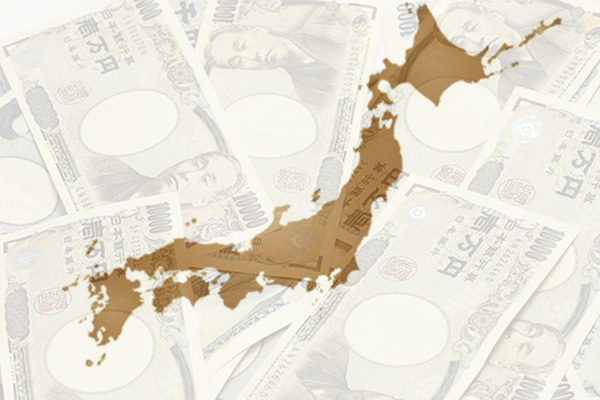Japan’s deflation over the past quarter century has affected not only its gross domestic product but also defense spending. Its national power, two pillars of which are economy and military, has continued declining. In stark contrast, totalitarian China has remarkably expanded its national power, threatening to swallow Japan. To ensure its national security, Japan has no choice but to break away from economic and defense deflation.
Japan remains bound by “postwar regime”
The Stockholm International Peace Research Institute has given Japan’s military spending at $49.1 billion for 2020, down 1.6% from 1995. The World Bank statistics has shown Japan’s GDP at a little more than $5 trillion, down 8.8%. Both military spending and GDP represent deflation. China’s military spending increased 20.3-fold from 1995 to $254.3 billion in 2020 and its GDP 20-fold to $14.7 trillion. China’s military spending and GDP are far more than Japan’s.
China’s economic growth has gained momentum since its accession to the World Trade Organization in December 2001 and after the 2008 global financial crisis. Its military spending has expanded even faster than its GDP. While attracting Japanese, U.S. and European companies to its market, China has acquired information technology indispensable for military purposes through overseas company buyouts. China has come to rival the United States also in cyberwarfare capabilities.
Behind Japan’s economic and defense deflation is a policy framework developed during the Cold War period. Under the framework including the war-renouncing constitution put into effect in 1947, the Public Finance Act mandating a balanced budget and the U.S. nuclear umbrella under the Japan-U.S. Security Treaty, Japan has tried to achieve stable economic growth while limiting defense spending to 1% of GDP and emphasizing balanced budget. The postwar regime has bound Japanese administrations even since the end of the Cold War in the early 1990s.
At the same time as the Soviet Union was broken up, Japan’s asset bubble burst, exerting strong deflationary pressure on the economy. While household consumption and domestic corporate investment have declined, the government has stuck to the balanced budget principle and left defense spending below 1% of GDP. As a result, economic and defense deflation has lasted for a quarter century.
Backed by its dominant economic and military power, the Chinese government under President Xi Jinping has forged ahead with its external expansionist policy including the expansion of maritime interests and the promotion of the Belt and Road Initiative to strengthen its overseas influence. China has enhanced military pressure on Taiwan toward its annexation and repeated intrusion into Japanese territorial waters around Okinawa Prefecture’s Senkaku Islands. As Japan’s money-making ability has declined, the yen’s effective value has plunged to the same level as 50 years ago. Conversely, China has enhanced its money power, buying land for a song in Hokkaido and other parts of Japan.
Utilize private surplus funds for investment
In the face of the serious national crisis, Japan has no choice but to abandon the postwar regime of the minimum military strength and fiscal austerity. Japan should promote its fiscal expansion to revitalize its economy as the first step. Japan can do so if it has a political will. Household and business money saved without being spent in Japan has reached about 1,500 trillion yen, nearly three times as much as its GDP, representing the world’s highest level. The government should issue massive bonds to raise surplus funds for programs for continued investment in defense and growth areas including digitalization to awaken animal spirits in the private sector.
Hideo Tamura is a Planning Committee member at the Japan Institute for National Fundamentals and a columnist for the Sankei Shimbun newspaper.


